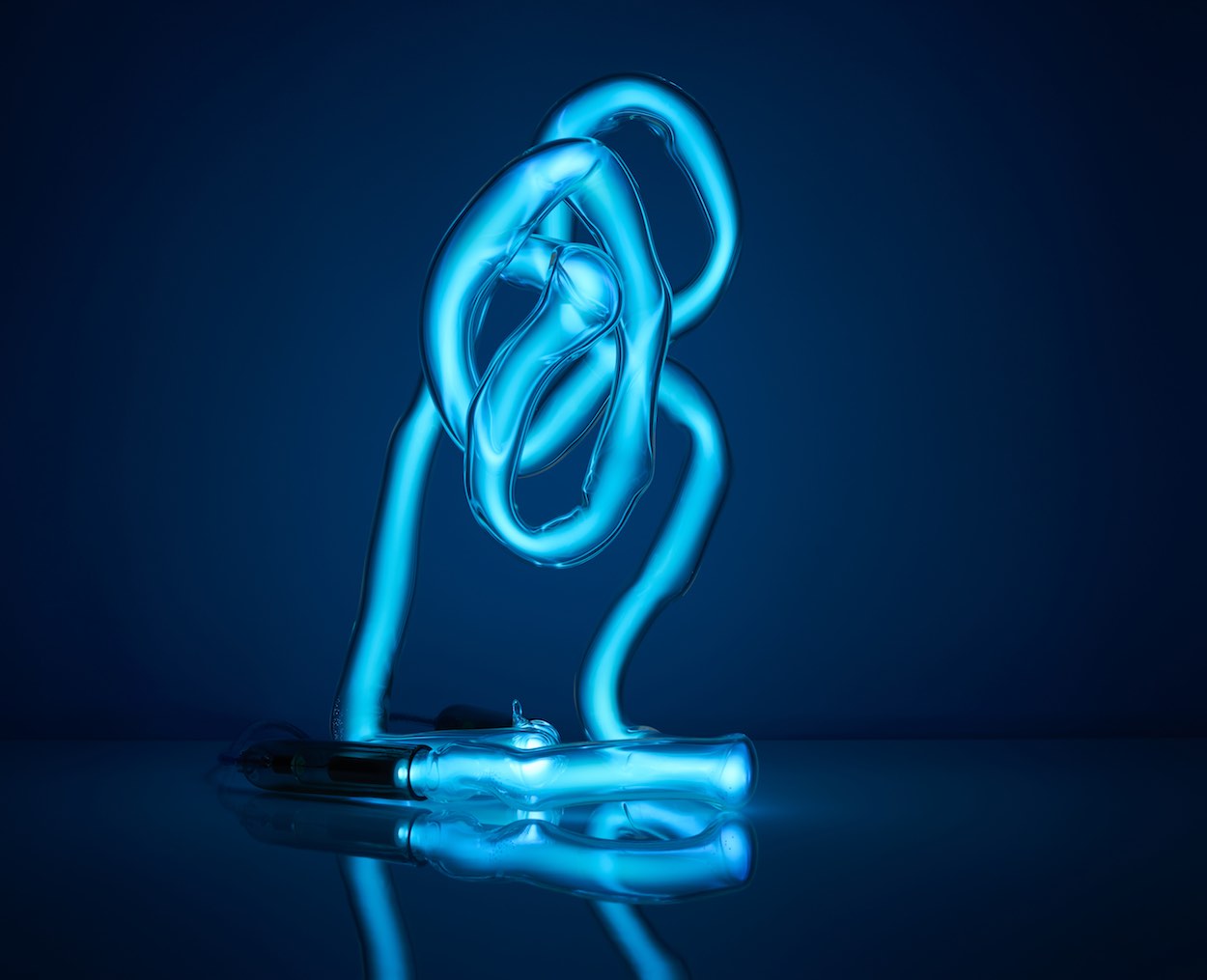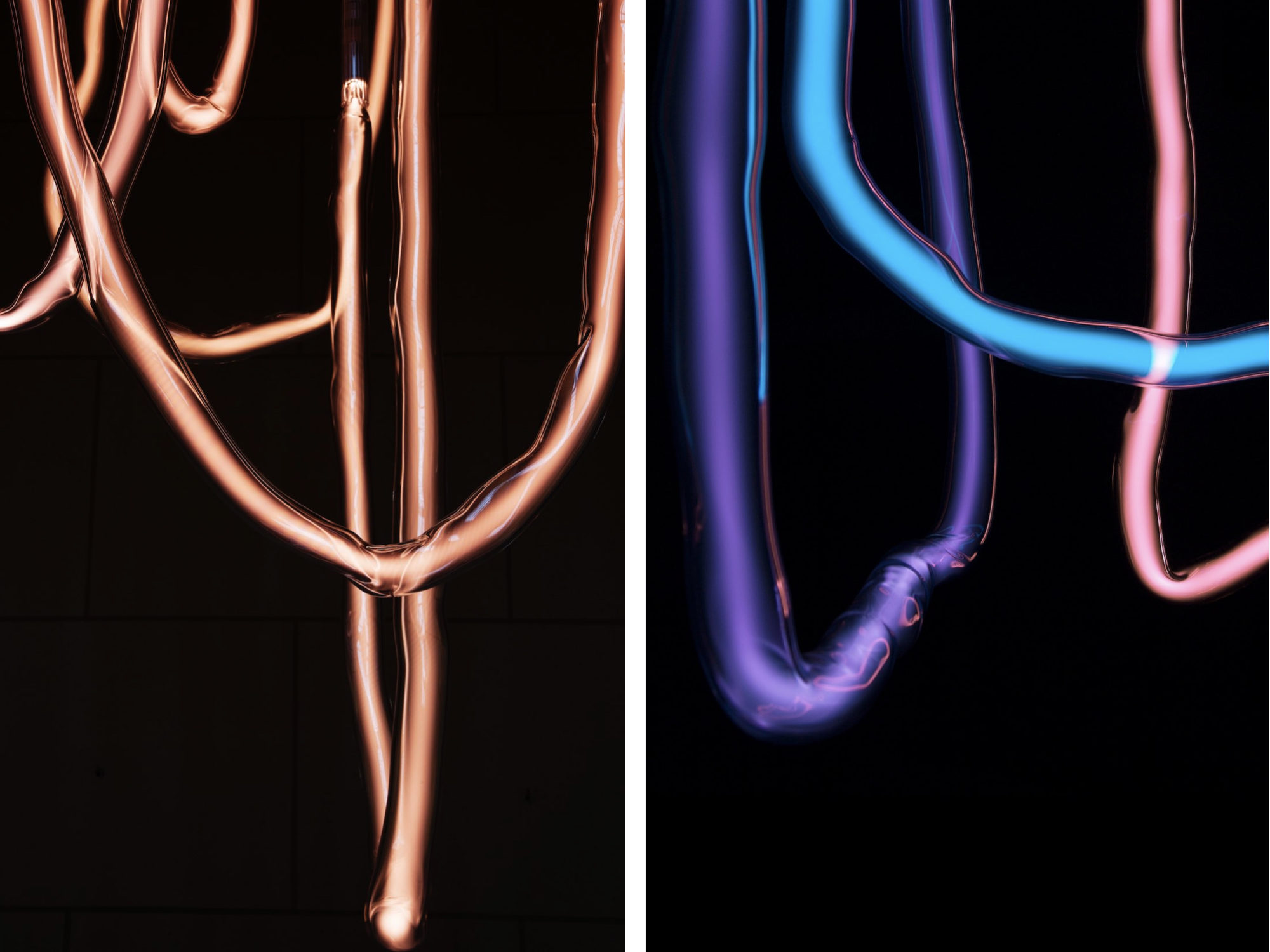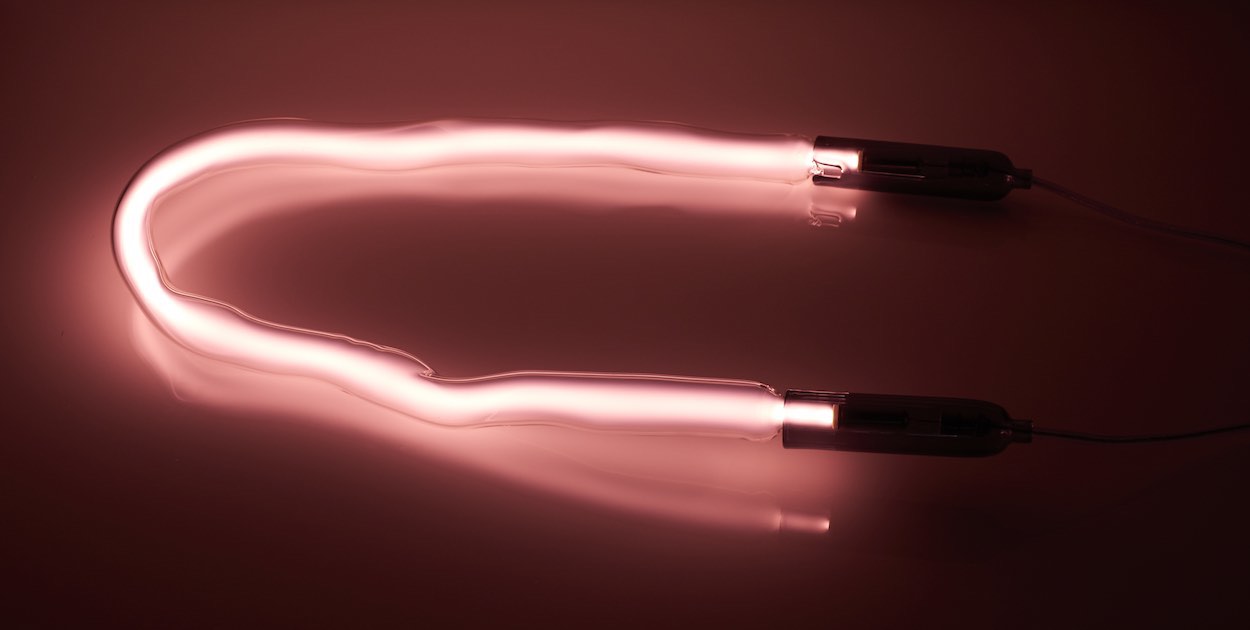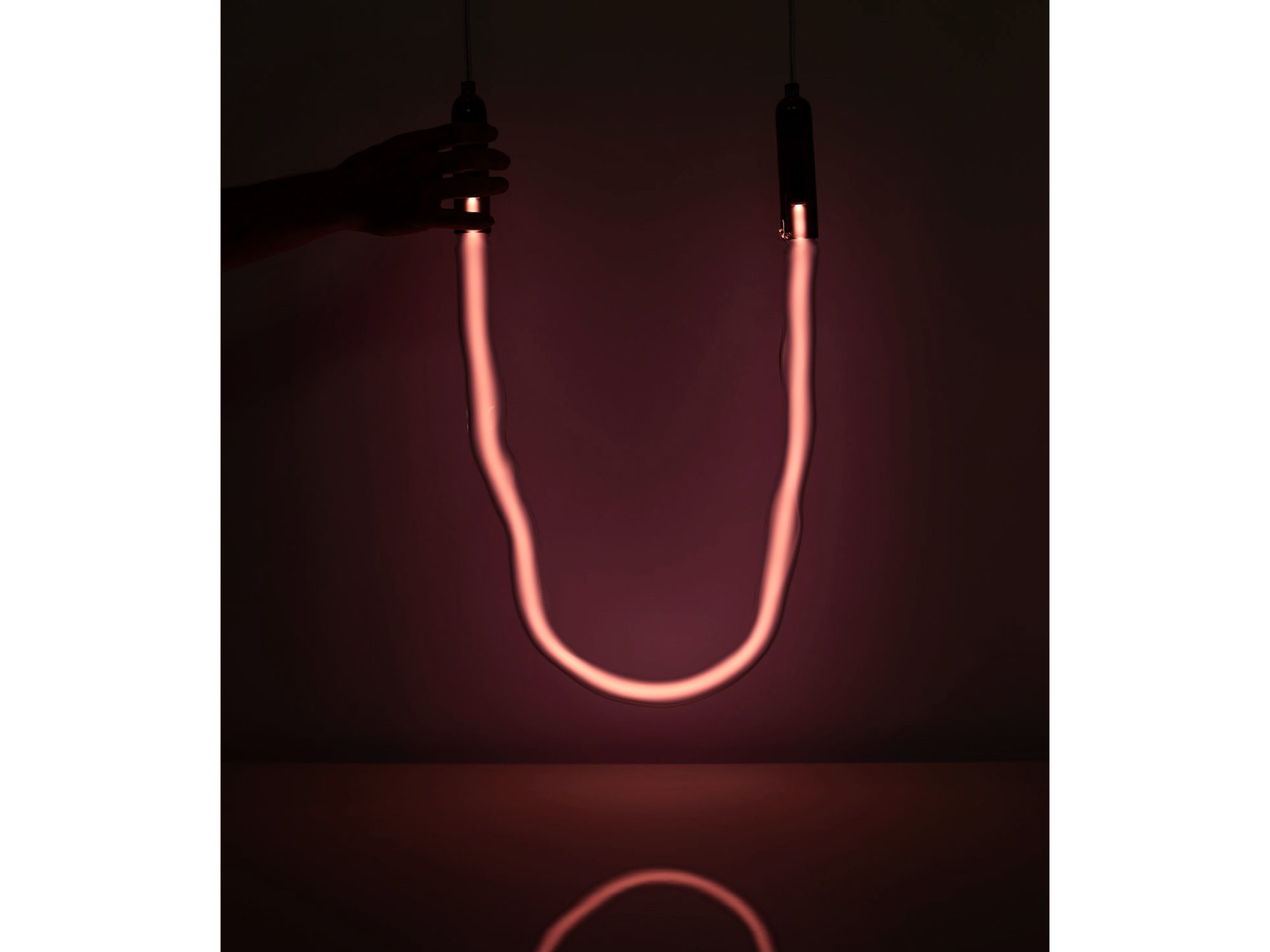Last fall, when Mette Hay, cofounder of her namesake homeware as brand, teamed up with Danish chef Frederik Bille Brahe to create a collection of kitchen essentials, it was nearly impossible to pick a favorite piece. But I did: A cockeyed, stubby, two-toned glass carafe called Jug. Recently, I stumbled upon a neon sculpture with a similarly wonky silhouette only to discover it was made by the same person: glass artist Jochen Holz. Who is he, and whence did this wobbly language develop? Let me explain.
Holz, 47, opened his East London studio in 2003. Most of his work is made using a technique called lampworking, which he picked up while training as a scientific glassblower (meaning, one who makes laboratory glassware) in his native Germany. Primarily used to make flasks, beakers, test tubes, and the like, lampworking involves using a torch, or lamp, as the primary heat source to melt the glass. Once molten, it’s shaped with tools, by blowing, or through various “moves,” where Holz performs sequences of pushing, pulling, and rotating the material in the flame. Unlike mouth-blowing, which, depending on the technique, produces organic shapes or incorporates the use of molds for uniform results, lampworking produces more specific, accurate, and complex shapes befitting lab experiments; in university settings, it’s done by specialized artisans who have a detailed understanding of how the glass will be used.
Holz always knew he wanted to do something creative with the technique. After earning a Master’s degree in design from London’s Royal College of Art, he began using it to make wares for the home and has been experimenting with it ever since. He presses objects (cheese graters, wood blocks) onto the melted glass to create a foreign, undulating texture on vases and cups, or fuses glass bubbles together (a method called incalmo) to create color-blocked vessels. More recently, he’s turned to neon—though his version looks nothing like the uniform tubes you’d encounter at a 24-hour diner. Instead, Holz uses thick borosilicate glass tubes to create intestine-esque sculptural fixtures, like the table lamp above.




